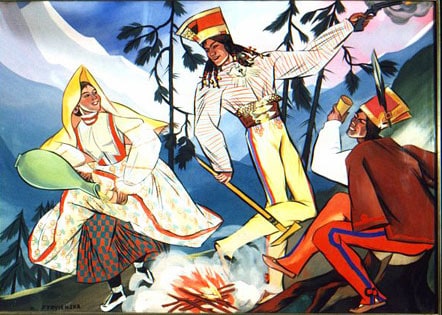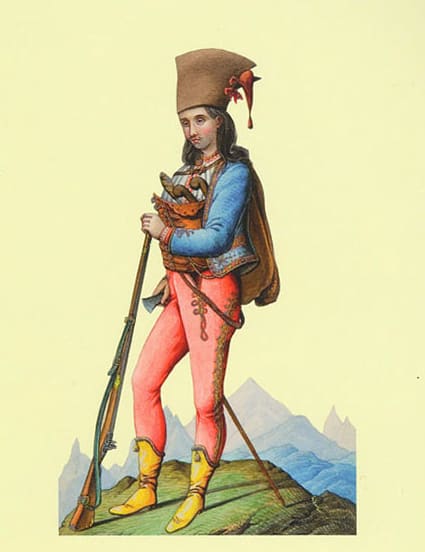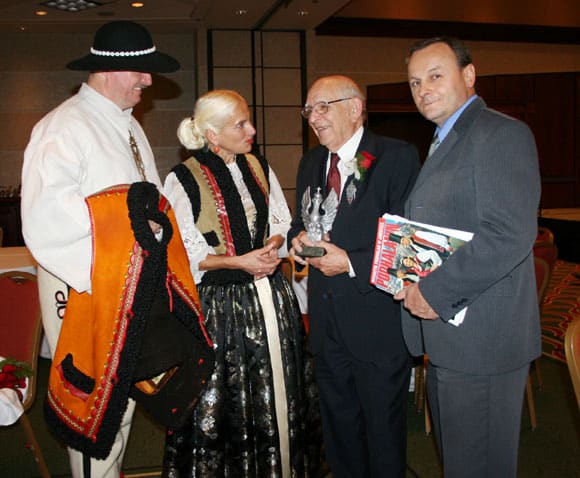

Many Polish-Americans have often heard „Third of May” rhetoric about the necessity of cherishing „our Polish heritage”. Unfortunately, very few Polonia spokesmen take the trouble of tellong them what exactly makes up this heritage.
There has been too much vagueness and murkiness about it. No wonder many second and third generation Polish-Americans fail to respond to these exhortations. They simply do not know very much about their Polish heritage, although they seem to be waiting eagerly for somone to be more explicit and relate it to present reealities and concerns.
This short piece has been written to focus on just a few elements which, I believe, are part of the Many Polish-Americans have often heard „Third of May” rhetoric about the necessity of cherishing „our Polish heritage „. Unfortunately, very few Polonia spokesmen take the trouble of telling them what exactly makes up this heritage. There has been too much vagueness and murkiness about it. No wonder many second and third generation Polish-Americans fail to respond to these exhortations. They simply do not know very much about their Polish heritage, although they seem to be waiting eagerly for someone to be more explicit and relate it to present realities and concerns.
Polish heritage as derived from the Polish Tatra highlanders, the górale. They include the concept of the dignity of all men, the unwillingness to accept any man as master, and above all, individual freedom.
These ideals have been exquisitely expressed by Kazimierz Przerwa-Tetmajer in many of his literary works but especially in his novel, JANOSIK NEDZA-LITMANOWSKI. What a source of inspiration for Polish Americans!

My favorite passage (which I translated for this article but should be read in Polish) deals with the face to face meeting between Janosik, the Robin Hood figure and chieftain of the Tatra highlander brigand band and King Jan Kazimierz, the Polish King of the second half of the XVII century, whose reign coincided with Poland’s „time of troubles”. Tetmajer described how Janosik and his band of highlanders thwarted a Swedish attempt to ambush the King’s party as it moved through, a Tatra mountain pass. In a bloody battle, Janosik’s men defeated the Swedish troops, thus saving the King’s life and permitting him to return from exile to Poland.
After this encounter, King Jan Kazimierz, according to Tetmajer’s imagination, cried out, „People, who are you? And who brought you here?” „Janosik Nedza Litmanowski,” was the reply. Suddenly, the Bishop of Cracow, Gebicki called out, „Peasants, the King is standing in front of you.” The highlanders then began removing their hats. „But where is your leader, this Janosik?” asked Jan Kazimierz. Janosik stepped forward, still dripping with blood from head to toe. He removed his hat, politely greeted the King, and then put his hat back on his head. „Sire, you may return to your realm,” he said. The Bishop of Cracow interrupted: „Man! Get that hat off your head. You are speaking to the King.” Then a certain nobleman from the King’s entourage interjected sarcastically, „On your knees, you boor.” Janosik, trying to restrain his anger, responded haughtily, „We two can talk to each other even with our hats on. As far as kneeling, I have been taught in church to kneel only before God.” This reply did not please the King very much, but he did not command Janosik to kneel nor to remove his hat. Instead, he asked, „What reward do you want?” Janosik thought a while, then said, „Slap the face of the one who told me to kneel before you.” The King burst out in laughter and said, „I may just do that, but what else do you want?” „Nothing,” said Janosik, „I helped you as one gazda would another. Return to your kingdom.” The King smiled. „If you should ever need help, Janosik, I will come with my troops to the Tatras.” „I don’t think it will be necessary. I can manage alone,” replied Janosik. „Well then, Janosik, I can only show you my gratitude with what I have with me on this journey.” The King took out a purse filled with gold and threw it to Janosik. The bishops and lords did the same. Janosik yelled out, „Men, grab the gold if you wish, and you, sire, accept this a’u gafrom me.” Janosik took his ciupaga (combination walking stick and hatchet) whis was still stained with blood and offered it to Jan Kazimierz. The King ordered his servant to accept the ciupaga and said, „It’s only because of this hatchet that I am able to return to my kingdom.” Then, the King advanced toward Janosik and embraced him.
It is often said in some circles that second generation Polish Americans, even those with higher education, who are the children of pre-World War I and pre-World War II peasant immigrants, still have certain inferiority complexes and low self esteem. To what extent this is true, only more research by social psychologists, cultural anthropologists and sociologists will reveal. But if it is even partly true, then it is worth bringing Tetmajer`s JANOSIK NEDZA LITMANOWSKI to the consciousness of Polish Americans.

Pictured L_R: Andrzej & Maria Krzeptowscy; author, Dr. Thaddeus V. Gromada, President and Executive Director of PIASA, recipient of the 2009 Heritage Award by Polish American Congress, IL Division and Andrzej Mikołajczyk. Chicago,October 4, 2009.
